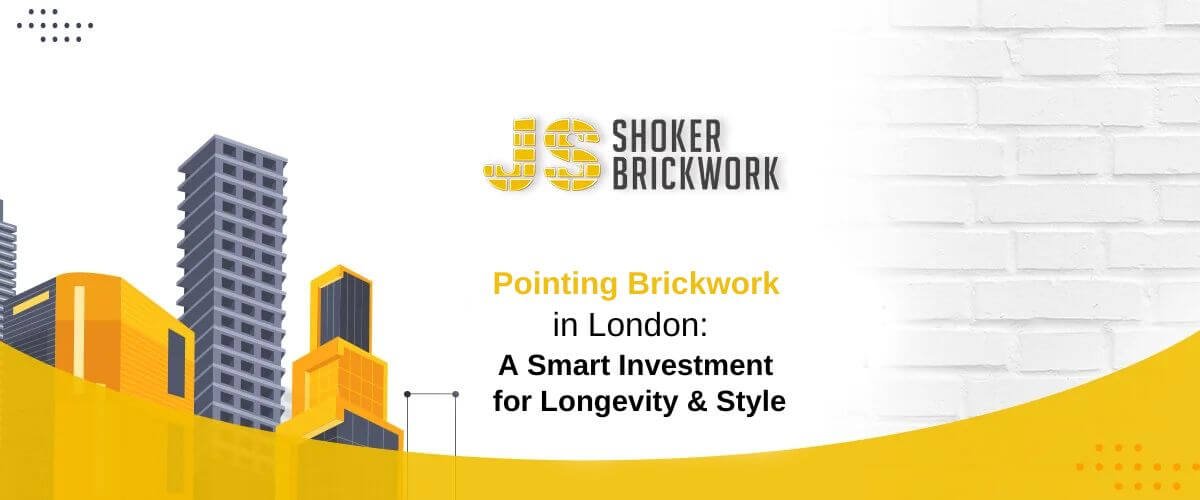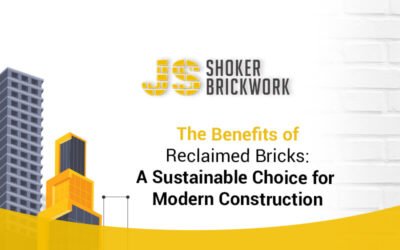London is popular for its beautiful brick buildings that are scattered across the cities and also the countryside. However, with beauty comes maintenance to ensure that these buildings look their best and also conserve integrity.
Understanding Pointing Brickwork: What is Pointing Brickwork?
Pointing Brickwork in London refers to the whole process of applying and finishing mortar between bricks in masonry construction. The process involves filling and sealing the joints with mortar. This helps in maintaining the integrity of the structure, in weatherproofing, and also the aesthetic appearance of a brick structure.
The very mortar used in pointing binds the brick together and also prevents water from entering the buildings. Pointing Brickwork makes the buildings stronger and more stable. One should not forget that pointing brickwork is a specialized skill, as the mortar should be chosen carefully, and applied to ensure that the brick structure remains stable and also visually appealing at the very same time!

The Importance of Pointing Brickwork
We all know that London’s climate has frequent rainfall and varying temperatures that ultimately lead to the wear and tear of brickwork! Below are some reasons why Pointing Brickwork is necessary and important
- Leads to structural integrity: This holds the brick together, aiming to provide strength and stability to the structure. If this is not done well, then bricks may become loose, leading to instability.
- Weather-proofing: Pointing in buildings in London can create a weatherproof seal between bricks, ensuring buildings remain watertight. If water does enter the building, it can lead to a lot of damage.
- Keeping in Mind Aesthetic Value: A well-executed pointing improves the overall appearance of the brick wall. The mortar can be selected, so to complement the design of the structure. This makes sure that the building looks professional and has an aesthetic appeal to it.
- Durability: Proper pointing helps to extend the life of a brick structure by protecting it from external elements. If the process is done properly, then it reduces the need for frequent repairs, and also helps to maintain the building’s strength for many years!

Types Of Pointing In Brickwork
In London, Pointing brickwork is very important because of the weather conditions. Below are some brickwork pointing types:
- Flush Pointing: In flush pointing, the mortar is applied level with the surface of the bricks, thus creating a flat and smooth joint. Flush pointing is majorly used in modern buildings and offers a minimalist appearance. It also prevents water from entering the building
- Recessed Pointing: In this kind of pointing, the mortar is applied slightly behind the surface of the bricks, creating a shadowed effect. Recessed pointing is mainly used for aesthetic purposes, especially in traditional buildings.
- Weathered Pointing: In this kind of pointing work, one involves angling the mortar so that it slopes inward, creating a weather-resistant joint that encourages water runoff. This is very effective at keeping water out of the joints!
- Tuck Pointing: This is a very decorative technique that involves applying a contrasting thin line of lime putty over flush or recessed pointing. This is often used in historic and high-end properties to make the visual appeal more enhanced.
- Struck Pointing: This is similar to weathered pointing. However, struck pointing has an angled mortar joint but is recessed at the top and protrudes at the bottom. This kind of pointing is used to highlight the texture of the brickwork.
- V-Pointing: This involves shaping the mortar into a V-shaped groove. This very style is popular in historic buildings, and provides both a distinctive aesthetic and also good water resistance!

The Process of Pointing Brickwork
- Preparation: The surface of the bricks must be cleaned properly to remove dust, debris or any old mortar. In this very process, old or damaged mortar is removed using some specialized tools.
- Mixing Mortar: The mortar then is carefully mixed to match the original brickwork in terms of color and texture. One should choose the right type of mortar based on the materials of the structure, and its location! To give an example, a lime-based mortar is often used in historic buildings to allow the structure to breathe and also to prevent moisture from being trapped.
- Application: After that, the mortar is attentively applied to the joints by using a pointing towel. The style of application depends on the type of pointing that is being used.
- Finishing Touches to the buildings: So, once the mortar has been put, it is shaped to the chosen style. One should make sure that the mortar is cured properly so that the building has maximum strength and durability.
Cost of Pointing Brickwork in London: Price for pointing brickwork
The cost of Pointing Brickwork depends of several factors:
- Size of the area: One should know that larger surfaces require more labor and materials
- Type of pointing: Decorative styles like tuckpointing are way more expensive
- Building height and access: One must know that higher buildings may require scaffolding, which adds to the costs.
- Mortar type: It is known that traditional lime mortar is costlier than modern cement mortar.
- Labor Costs: The professionals and skilled people will charge varying rates depending on their expertise and location!
On average, Pointing Brickwork in London costs between £40 to £100 per square meter, this will depend on the complexity of the job!
Importance of Proper Pointing in Brick Construction
Pointing in London buildings is very much needed to maintain the brick structures’ overall stability and longevity. A well-pointed wall can take care of itself during weathering, dampness, and other external factors that may lead to deterioration. If skilled professionals do proper pointing, that not only contributes to the structural integrity of the property but also adds an aesthetic appeal! This can ultimately be a very good selling point when it comes to valuation.
DIY vs. Professional Pointing
DIY pointing is possible for small areas, professional services have many advantages.

Benefits of Hiring a Skilled Craftsmanship
Below Are Some Benefits of Hiring a Skilled Craftsmanship.
- With Skilled professionals, one makes sure that there is a proper application and the results are long-lasting
- The materials used are of good quality, and one uses appropriate mortar for historic and modern buildings
- When it comes to hiring professionals, they complete the work faster and with better precision
- Proper equipment and techniques prevent accidents and damage
- Also, most professionals who do the work – offer a warranty for their services.
Key Precautions to Take While Pointing Brickwork in London
As discussed earlier, pointing brickwork is very important in maintaining the integrity and appeal of buildings in London. As the city’s weather is rainy and unpredictable, special care must be taken during the process.
- Assess the condition of Brickwork: Before starting, one should inspect the bricks for damage or erosion. One must take care that cracked or loose bricks should be replaced.
- Use the Right Mortar Mix: One should make sure that the mortar mix is compatible with the existing brickwork, this is especially for heritage buildings. One should use lime-based mortar for older structures.
- Do work on suitable weather conditions: One should avoid pointing in cold, wet, or hot conditions. If the mortar is applied in freezing temperatures, that can cause the mortar to weaken. Also, excessive heat can cause the mortar to dry.
- Remove Old Mortar Properly: Proper tools should be used to remove old mortar. One should also avoid power tools if the building is delicate.
- Moisten the bricks: One should dampen the bricks before the process of repointing them. This will avoid the bricks from absorbing moisture from the new mortar.
- Use the Correct Pointing Technique: It’s also crucial to use the right pointing technique and apply the mortars in layers, and have a durable finish!
- Clean Up Excess Mortar Immediately: It’s crucial to keep away any excess mortar before it dries on the bricks and thus, one cannot maintain a clean finish.

Conclusion: Come To JS Shoker for Brick Pointing
So, brick pointing is very crucial in London buildings, as it keeps the structures intact and also helps to prevent it from any rainy conditions and weather. If you’re looking for pointing brickwork near me, then you can choose JS Shoker.
We specialize in many areas and fields, one of them being expert brickwork services. We provide brickwork, stonework, and blockwork services! We believe in more than just constructing buildings, but building legacies. At JS Shoker, we specialize in crafting timeless structures from bricks, blocks, and stone.
Some Frequently Asked Questions About Pointing Brickwork
1. Why is pointing important?
Pointing is important as it protects buildings from water ingress, prevents structural damage, and also improves the appeal of a building.
2. What are the different types of pointing?
These include flush pointing, recessed pointing, weather-struck pointing, and tuck pointing!
3. What type of mortar should be used for pointing?
Traditional lime mortar is ideal for older buildings, while cement-based mortar is used for modern structures.
4. Can pointing help prevent damp problems?
Yes, good-quality pointing is good for moisture penetration, reducing the risk of dampness in the buildings!



